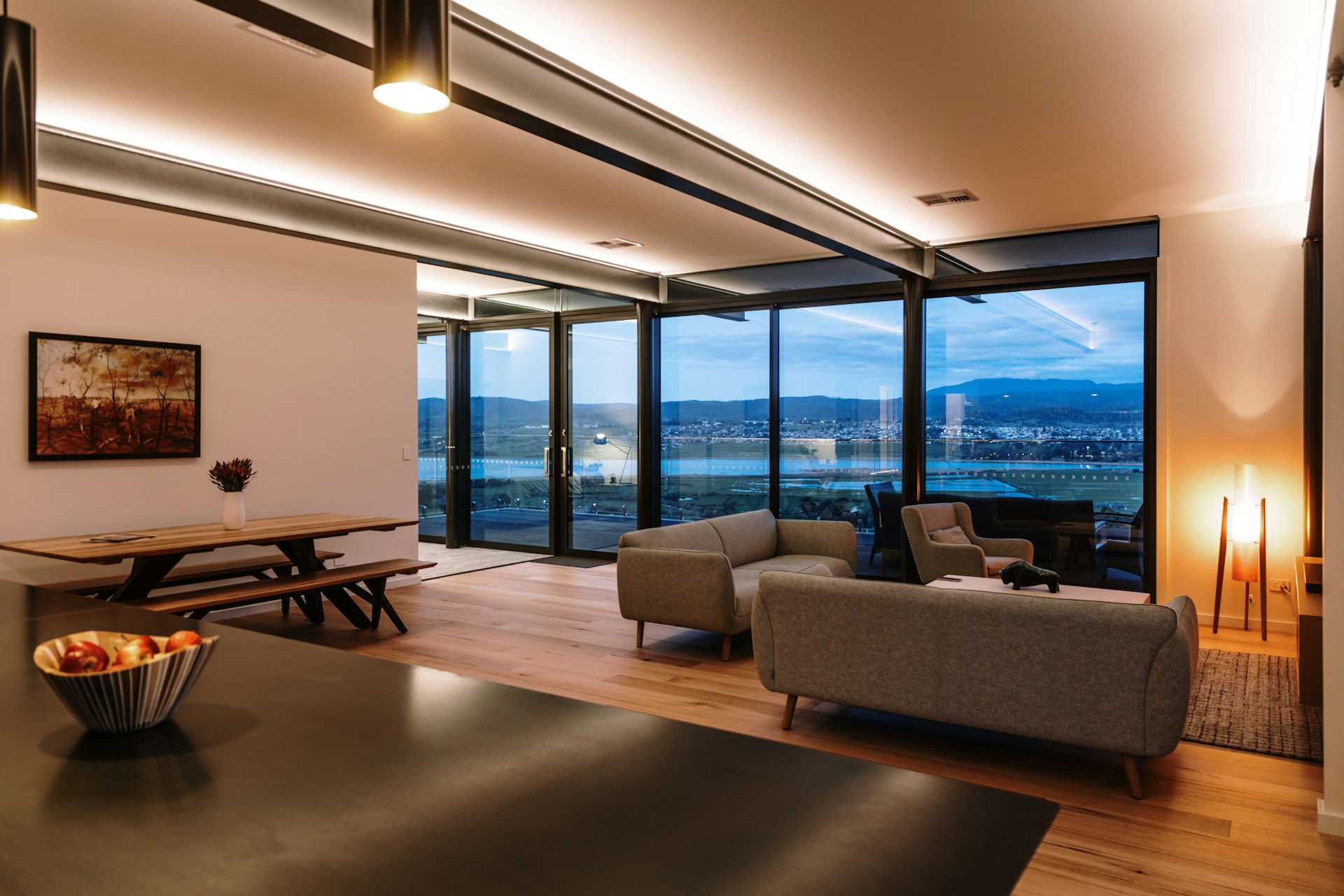Easy Ways to Improve Your Home's Lighting
Proper lighting can dramatically change the ambiance of your home. You may design a living area that works well for a variety of activities and moods by selecting the appropriate fixtures and styles. The right lighting combinations can improve your home's aesthetic appeal and enhance its functionality.

Understanding Different Types of Lighting
To effectively improve your home's lighting, it's crucial to understand the various types available. Generally, lighting can be categorized into three main types: ambient, task, and accent. Ambient lighting serves as the main source of light in a room, providing illumination.
Task lighting, on the other hand, focuses on areas where specific activities take place, such as reading or cooking. Accent lighting highlights particular features in a space, such as artwork or architectural details. Using these three types of lighting creates a balanced and effective lighting plan. Mixing methods will meet your practical needs and add layers to the design.
Incorporating Statement Pieces
Statement pieces in lighting can serve as focal points in any room. These should draw the eye and set the tone for the rest of your decor. Once you discover statement modern chandeliers, it's hard to go back to classic designs. They create an immediate visual impact and can reflect your personality or the atmosphere you wish to cultivate.
Choosing the right statement piece can be transformative. Positioning a large, eye-catching light fixture above a dining table or in an entryway can give that area a unique charm. The shape, size, and materials of a bold piece can work as art while still performing its function. A modern chandelier can blend style with utility, providing ample light while maintaining aesthetic allure.
Utilizing Natural Light
Maximizing natural light can significantly improve your home's ambiance. Simple adjustments to window treatments or strategically placing mirrors can amplify the light entering your rooms. Sheer curtains can filter sunlight without completely blocking it. Mirrors can reflect light, making spaces appear larger and brighter. Placing mirrors opposite windows creates an illusion of depth, enhancing that natural glow.
Freshen up your windows and clean them regularly to allow as much light as possible to enter. Having clean windows can drastically improve the natural light that floods a room. Using lighter paint tones on walls can enhance the reflective qualities of the light, creating a crisp, inviting feel throughout your space.
Adding skylights or solar tubes is another effective way to bring natural light into darker areas of the home. Trim outdoor vegetation that may block sunlight from reaching your windows. Rearranging furniture to avoid obstructing windows can help light flow freely through each room.
Layering Your Lighting
Layering involves combining different lighting types to create a more dynamic and functional environment. Start with ambient lighting, then add task lights for specific activities and accent lighting to highlight particular features. This approach allows you to adjust the mood of a space seamlessly. In the kitchen, you could have recessed lights for general illumination, under-cabinet lights for cooking tasks, and pendant lights hanging over a central island as accent pieces.
Layering serves practical purposes and offers flexibility. On days when you prefer a softer atmosphere, you might use only the accent and task lighting. During social gatherings, you can brighten the entire space for a more lively environment.
Selecting the Right Bulbs
The type of bulbs you choose impacts the fixture's performance and the ambiance. Think about options such as LED, incandescent, and fluorescent bulbs, each with its unique qualities. LEDs tend to last longer and use less electricity while providing a variety of color temperatures, from warm to cool white light. Incandescents emit a warm glow, which is often more flattering in living spaces, while fluorescents are typically more energy-efficient but might emit a harsher light.
Choosing the right bulb can change how colors appear in your house. Warmer colors can create a cozy feel, and cooler options can make spaces appear cleaner and more modern. Always think about the atmosphere you want to achieve when selecting bulbs.

Regular Maintenance and Upgrades
Keeping your lighting fixtures and bulbs in good condition is often overlooked. Regular maintenance, such as cleaning fixtures and replacing burnt-out bulbs, ensures that your home remains well-lit and inviting. Upgrading fixtures over time can lead to improved energy efficiency as well as the potential for better lighting.
Many modern fixtures come with features such as dimmers, smart controls, or adjustable light settings. Maintaining and upgrading can save on energy costs and contribute to a more enjoyable home environment. As a tip, set a schedule for regular checks of your lighting, ensuring that everything remains functional and aesthetically pleasing.
Applying these straightforward techniques significantly enhances your home's lighting. A well-lit space elevates design and positively influences daily life, whether during quiet evenings or lively gatherings. Incorporating various lighting types and making informed choices about fixtures and bulbs creates a welcoming environment you will love returning to.
Published 6/24/25